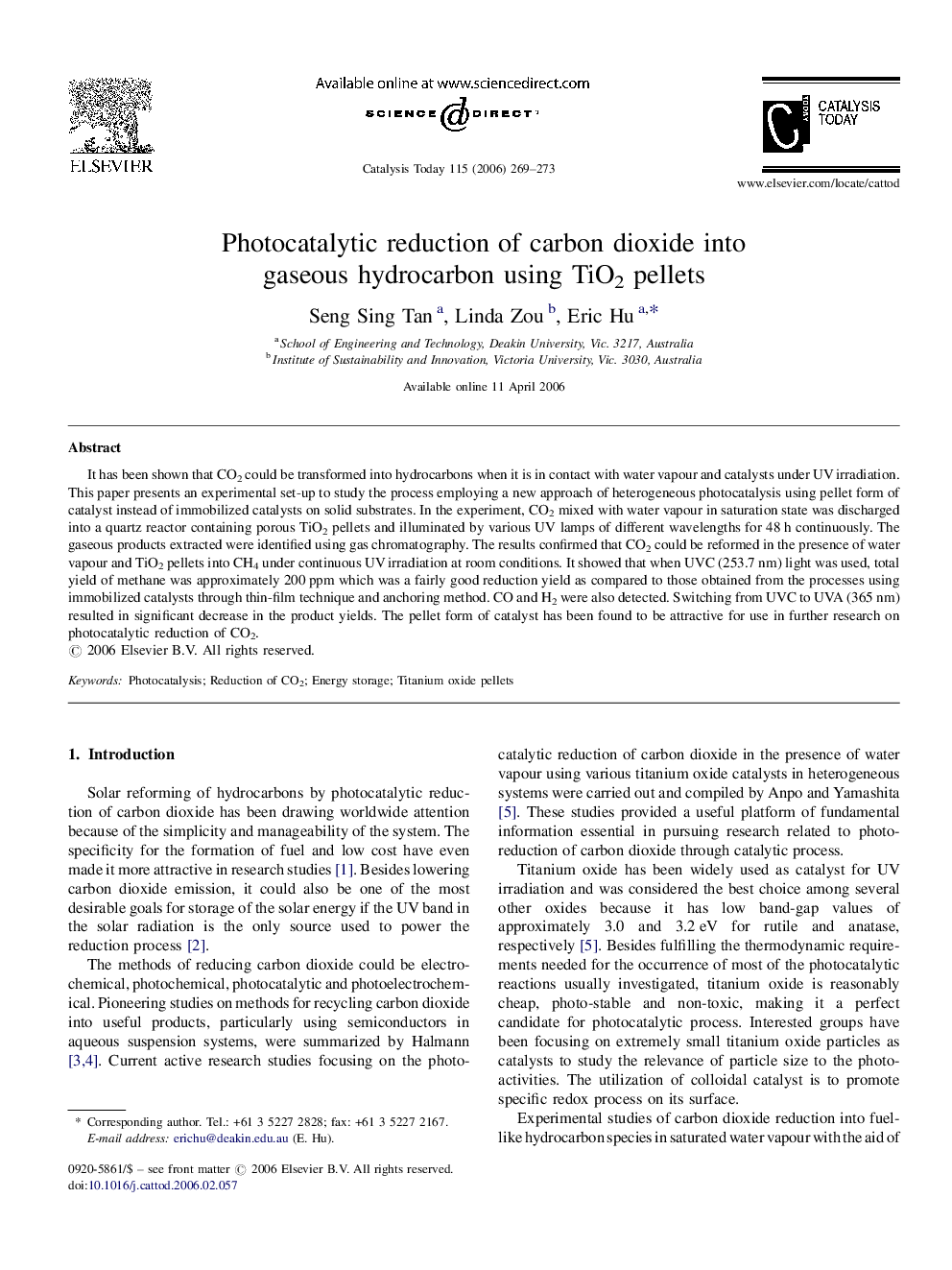| Article ID | Journal | Published Year | Pages | File Type |
|---|---|---|---|---|
| 58866 | Catalysis Today | 2006 | 5 Pages |
It has been shown that CO2 could be transformed into hydrocarbons when it is in contact with water vapour and catalysts under UV irradiation. This paper presents an experimental set-up to study the process employing a new approach of heterogeneous photocatalysis using pellet form of catalyst instead of immobilized catalysts on solid substrates. In the experiment, CO2 mixed with water vapour in saturation state was discharged into a quartz reactor containing porous TiO2 pellets and illuminated by various UV lamps of different wavelengths for 48 h continuously. The gaseous products extracted were identified using gas chromatography. The results confirmed that CO2 could be reformed in the presence of water vapour and TiO2 pellets into CH4 under continuous UV irradiation at room conditions. It showed that when UVC (253.7 nm) light was used, total yield of methane was approximately 200 ppm which was a fairly good reduction yield as compared to those obtained from the processes using immobilized catalysts through thin-film technique and anchoring method. CO and H2 were also detected. Switching from UVC to UVA (365 nm) resulted in significant decrease in the product yields. The pellet form of catalyst has been found to be attractive for use in further research on photocatalytic reduction of CO2.
